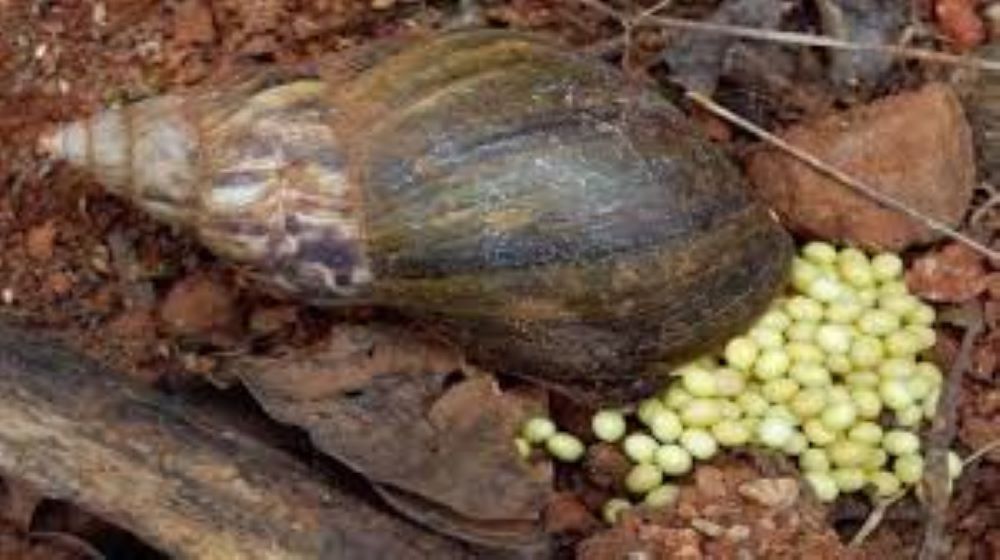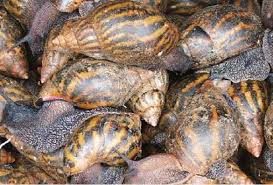My journey into snail farming: From backyard to boom
I never thought that a casual stroll in my backyard would lead me to a thriving business. That’s exactly what happened when I stumbled upon a group of snails making their way through the grass. I picked 35 of them, but not at once, as I actually picked them in batches, and started rearing them, unaware that I was about to uncover a lucrative opportunity in snail farming.
How many eggs can a snail lay in a year?
The first time one of my snails laid eggs, I was ecstatic. 11 tiny eggs marked the beginning of my journey into the world of snail farming. Little did I know that this was just the start of a profitable venture. Snails can produce up to six batches of eggs in a single year.
Snail farming industry
Snail farming, also known as heliculture, is a growing industry in Nigeria and other parts of the world. The demand for snails is increasing, driven by their nutritional value and culinary appeal.
The global snail farming industry is estimated to be worth USD$12 billion and this is because it produces up to approximately 450,000 tonnes per year for consumption while Nigeria alone needs about 7,500,000 kilograms every year.
Starting a snail farming business.
Snail farming is very easy to start because it is not capital-intensive and it does not require a large space of land. As a matter of fact, snail farming can be done from your backyard or any little space you can find around your home.
But, what type of snail is best suited for farming in Nigeria?
The giant African snail (Achatina achatina) is the most popular species for snail farming in Nigeria. It’s a hermaphrodite, meaning it has both male and female reproductive organs, making it ideal for breeding. This species is also known for its fast growth rate and high yield.
Snail cages
To keep my snails safe and healthy, I used snail cages made of wire mesh or plastic containers with ventilation holes. The cages are placed in a shaded area to protect the snails from direct sunlight and heat. I also added a layer of soil to the cages to provide a comfortable surface for the snails.
Best foods to feed your snails
Snails are herbivores and love to feed on a variety of plants and fruits. Some of the best foods to feed your snails, which I have tried and I noticed my snails love a lot include:
- Leafy greens such as water leaf, bitter leaf, lettuce, ugu, and ewedu – these are local names for the leaves
- Fruits like apples, bananas, and water melon
- Vegetables like carrots, cucumbers, and sweet potatoes
- Snail feed pellets or powder for you can also do this at home, most time I formulate my snail calcium from egg shells

Benefits of snail farming
- Snail farming has low start-up capital and maintenance costs.
- Snails are environment-friendly because neither the snails nor their droppings have an offensive smell.
- Snail meat does not contain fat and cholesterol so it is more nutritious than other meat such as chicken meat.
- Snails are a rich source of Vitamin A which boosts your immune system and nourishes your eyes.
- Snail farming provides manure that can be used to improve the organic content of the soil.
- The mucin from the snail is important to human skin. It helps hydrates the skin and treats dry skin conditions. The snail mucin also slows ageing and eliminates wrinkles, scars, and stretch marks.
- Snail shells serve as calcium used for animal feeds.
- Snails have a low mortality rate, they can live up to 20 years.
Nutritional value of snails
Snails are a rich source of protein, iron, and calcium. They are also low in fat and calories, making them healthy alternatives to traditional meat sources. Snails are also rich in vitamins and minerals like Vitamin A, vitamin E, vitamin B12, and selenium.
Is snail farming profitable?
The answer is yes. Snails are in high demand, and their prices can range from ₦500 to ₦2,000 (About USD$2) per kilogramme, depending on the size and quality. With proper care and management, a snail farm can generate significant income.
How long does it takes for a snail to grow?
The growth rate of snails depends on factors like diet, temperature, and humidity. On the average, it takes about 6 to 12 months for a snail to reach maturity. With proper care, some species can grow up to 20 centimeters in length and weigh up to 500 grammes.
Conclusion
My journey into snail farming has been rewarding, and I’m excited to share my experience with others. If you’re considering starting a snail farming business, here are some useful tips:
- Start small and scale up as you gain experience
- Provide a suitable environment with adequate food, water, and shelter
- Monitor temperature and humidity levels
- Keep records of breeding, growth, and sales
Snail farming is a lucrative business that requires patience, dedication, and the right knowledge. If you’re willing to put in the effort, you can turn really your backyard into a booming snail farm.

